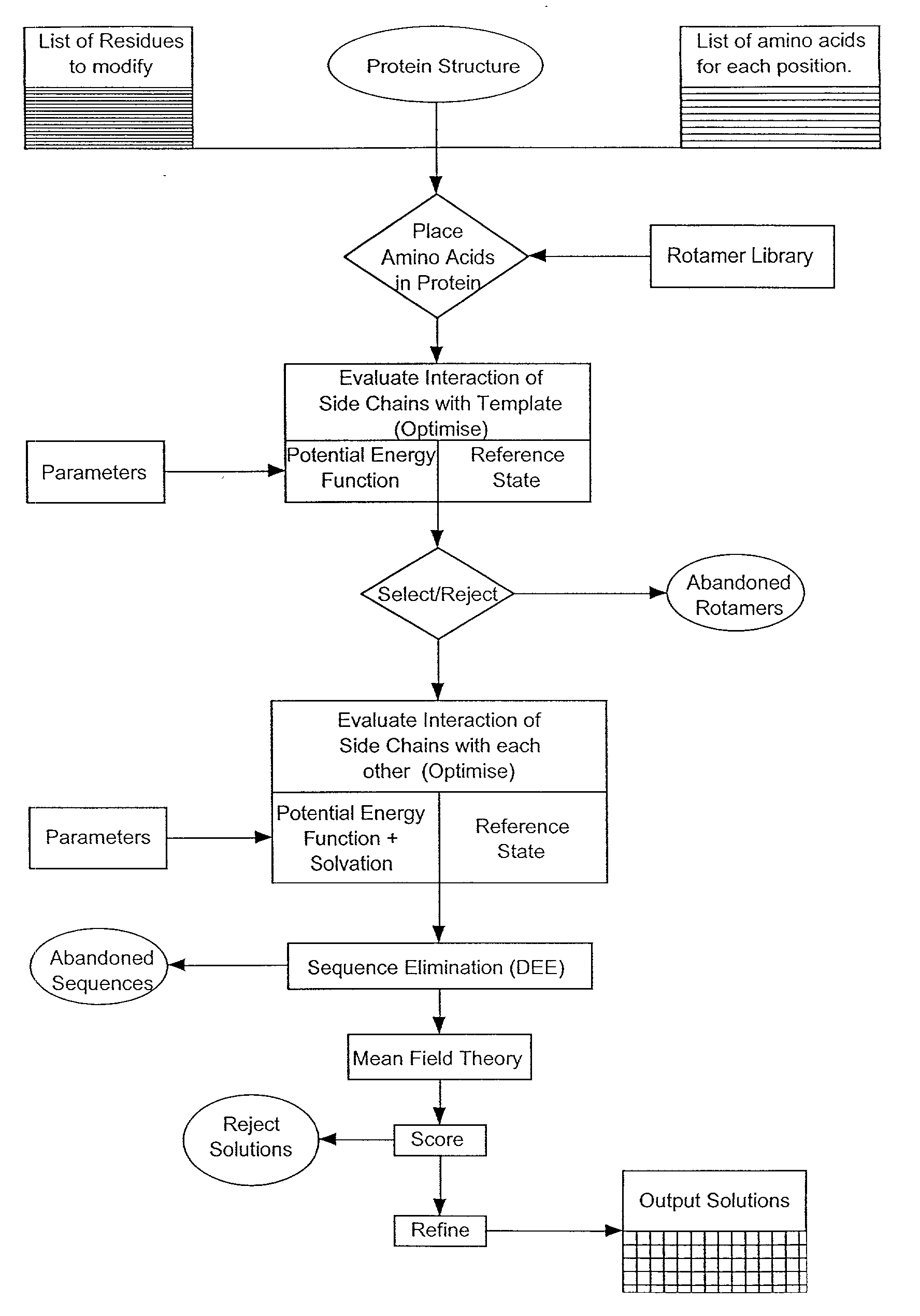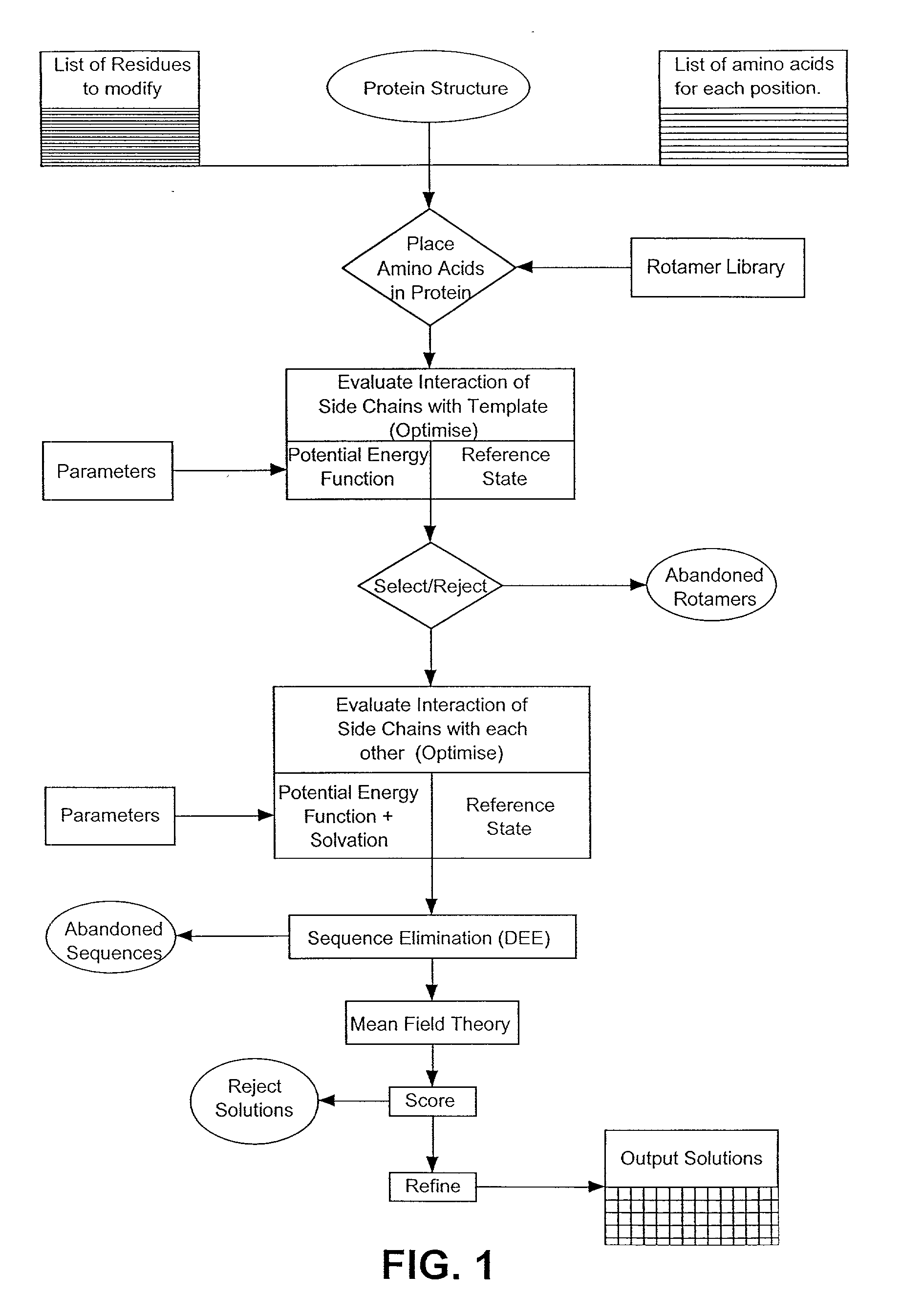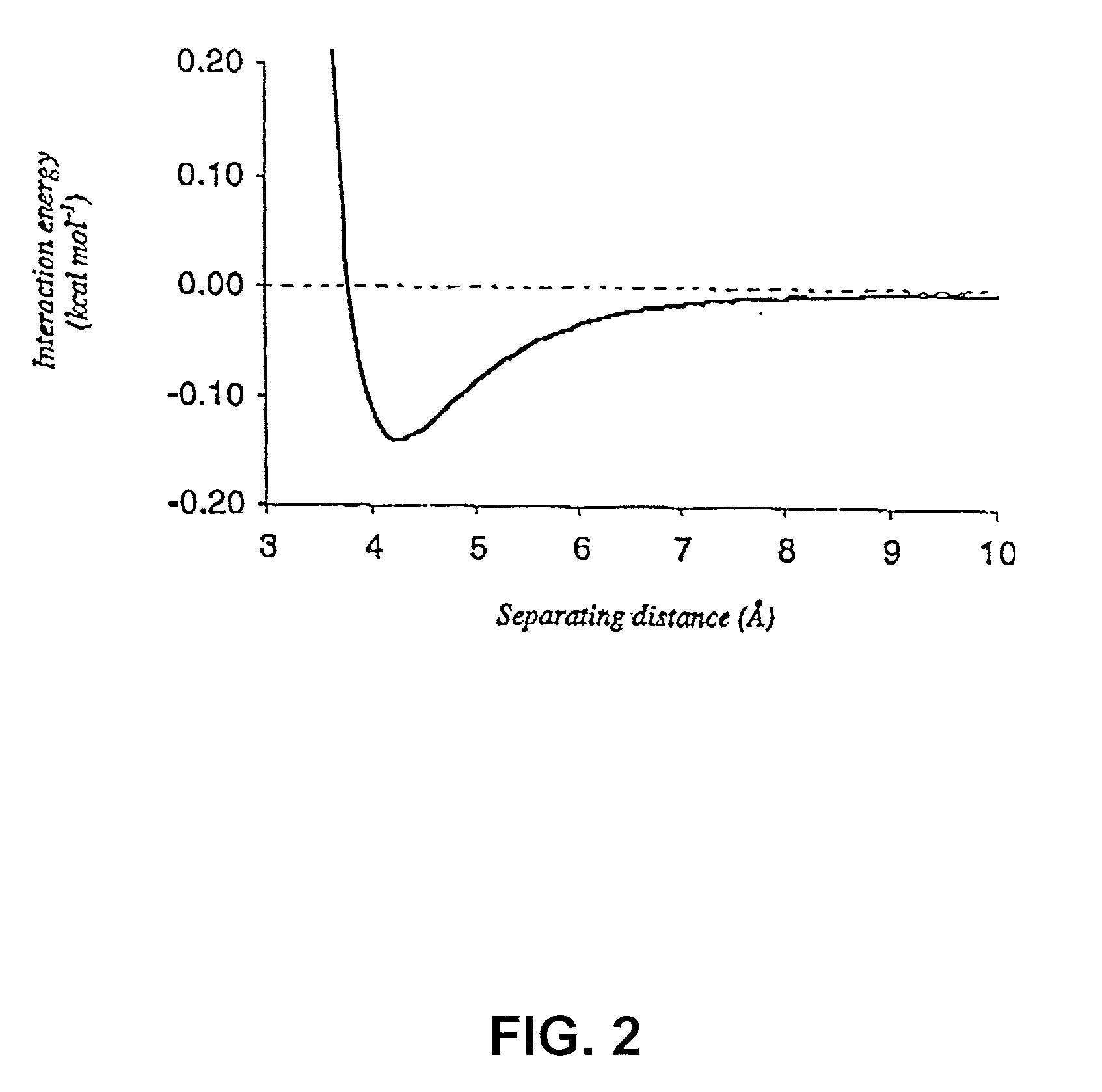Computer-based method for macromolecular engineering and design
a macromolecular and computer-based technology, applied in the field of macromolecular engineering and design, can solve the problems of unexpected or undesired, unstable, lethal, unstable, etc., and achieve the effect of improving the analysis, improving the solution, and improving the effect of the analysis
- Summary
- Abstract
- Description
- Claims
- Application Information
AI Technical Summary
Benefits of technology
Problems solved by technology
Method used
Image
Examples
Embodiment Construction
[0027] Section 5.1 gives an overview of the invention. In Section 5.2, the method of the present invention as implemented in Perla, the preferred embodiment of the invention, is described in brief (FIG. 1). Subsequent sections describe in more detail each step of the method of the present invention, with emphasis on these steps as implemented in Perla. In Section 5.3, a detailed mathematical description is given of the empirical scoring function used to calculate the energy difference between an optimized conformer of a mutated target protein and some reference state. Section 5.4 provides a detailed theoretical description of the molecular mechanics potential, and of van der Waals, electrostatic, and hydrogen bonding energies, which contribute to it. Section 5.5 provides a detailed mathematical description of the empirical potential, calculated from changes in solvation and entropy of the protein chain, and which introduces an approximate description of the interaction of solvent wi...
PUM
| Property | Measurement | Unit |
|---|---|---|
| Lattice constant | aaaaa | aaaaa |
| Time | aaaaa | aaaaa |
| Time | aaaaa | aaaaa |
Abstract
Description
Claims
Application Information
 Login to View More
Login to View More - R&D
- Intellectual Property
- Life Sciences
- Materials
- Tech Scout
- Unparalleled Data Quality
- Higher Quality Content
- 60% Fewer Hallucinations
Browse by: Latest US Patents, China's latest patents, Technical Efficacy Thesaurus, Application Domain, Technology Topic, Popular Technical Reports.
© 2025 PatSnap. All rights reserved.Legal|Privacy policy|Modern Slavery Act Transparency Statement|Sitemap|About US| Contact US: help@patsnap.com



